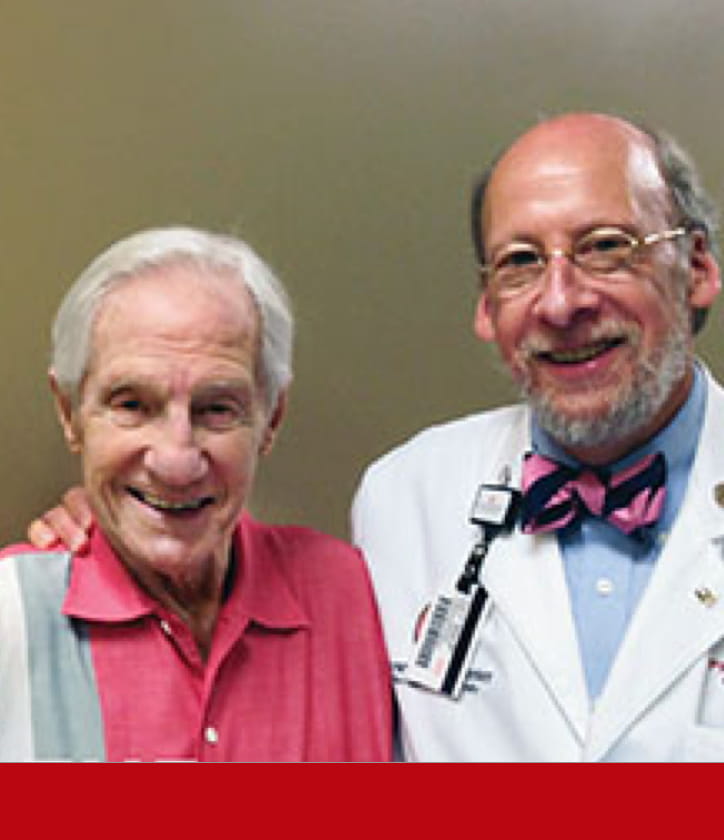Glaucoma is a group of diseases that can damage the eye’s optic nerve. It’s a leading cause of blindness in people over the age of 60. But blindness from glaucoma can often be prevented with early treatment.
Causes of glaucoma
There are two major types of glaucoma:
- Primary open-angle glaucoma is the most common, happening when the eye doesn’t drain fluid as well as it should, resulting in an excess of pressure within the eye. Eventually, this damages the optic nerve. This type of glaucoma is painless, and there may be no vision changes early on.
- Closed-angle glaucoma happens when your iris is very close to the drainage angle in your eye, where the iris and the sclera (the outer layer of the eye) meet. With glaucoma, the iris blocks the drainage angle and eye pressure rises quickly. This is an eye emergency, and you should call your ophthalmologist right away.
Symptoms of glaucoma
Primary open-angle glaucoma has no warning signs or obvious symptoms. It happens gradually, and your vision may be normal until the damage is severe. As glaucoma progresses, you may develop blind spots in your side vision. Regular eye exams are important for people over age 40.
Symptoms of closed-angle glaucoma include:
- Sudden, blurred vision
- Severe eye pain or forehead pain
- Headache
- Nausea and vomiting
- Rainbow-colored halos around lights
You’re at risk for glaucoma if you are over age 40, have a family history of glaucoma, are farsighted or nearsighted, or have had an eye injury. You’re also at risk if you have diabetes, migraines or high blood pressure.
At-risk patients and patients diagnosed with glaucoma can benefit from iCare Home Monitoring. You'll take eye pressure readings at home with an easy-to-use, handheld device to help your eye doctor create a personalized treatment plan.
Diagnosis of glaucoma
A complete eye exam is the only way to identify glaucoma. This exam consists of:
- Measurement of eye pressure
- Inspection of the eye’s drainage angle
- Examination of the optic nerve
- Testing of side vision
- Measurement of the thickness of the cornea
The exam also involves performing a computer measurement or creating a picture of the optic nerve.
Treatment of glaucoma
Nonsurgical treatment
Glaucoma can be treated in a number of ways, depending on how serious it is. Treatments include:
- Medications to lower the pressure in your eye. They’re given as eye drops and used every day.
- Laser surgery, depending on the type of glaucoma you have.
- If you have open-angle glaucoma, you may have trabeculoplasty. The eye surgeon uses a laser to ensure that the fluid in your eye drains properly.
- If you have closed-angle glaucoma, you may have an iridotomy. The eye surgeon uses a laser to create a tiny hole in the iris to help drain the fluid in your eye.
Surgical treatment
- Trabeculectomy: the eye surgeon creates a tiny flap in the sclera. They then create a pocket in the conjunctiva, the clear tissue that covers the white part of the eye. This pocket, which allows fluid to drain, is usually under the upper eyelid and can’t be seen.
- Glaucoma drainage device: your eye surgeon may implant a tiny drainage tube in your eye, helping fluid drain into a reservoir that your surgeon creates beneath the conjunctiva.
- Cataract surgery: the eye’s natural lens is removed, lowering eye pressure in some cases.
Why choose Ohio State for glaucoma treatment
The Ohio State University Havener Eye Institute has a tradition of more than 80 years of excellence in ophthalmology. Our Department of Ophthalmology sees 87,000+ patients each year. We have locations throughout the Columbus area including our main eye care clinic near the Ohio State campus on Olentangy River Road, which also provides on-site surgical eye care. Satellite offices also serve Dublin and Westerville. Coming soon: offices in New Albany and a new state-of-the-art surgical facility in Dublin.
The mission of The Ohio State University Wexner Medical Center Department of Ophthalmology and Visual Sciences is to restore, preserve and enhance vision to improve lives. Each and every day, we strive for excellence in patient care by providing all our patients with the latest examination and diagnostic techniques, both medical and surgical.
Helpful Links
How would you like to schedule?
Don’t have MyChart? Create an account








